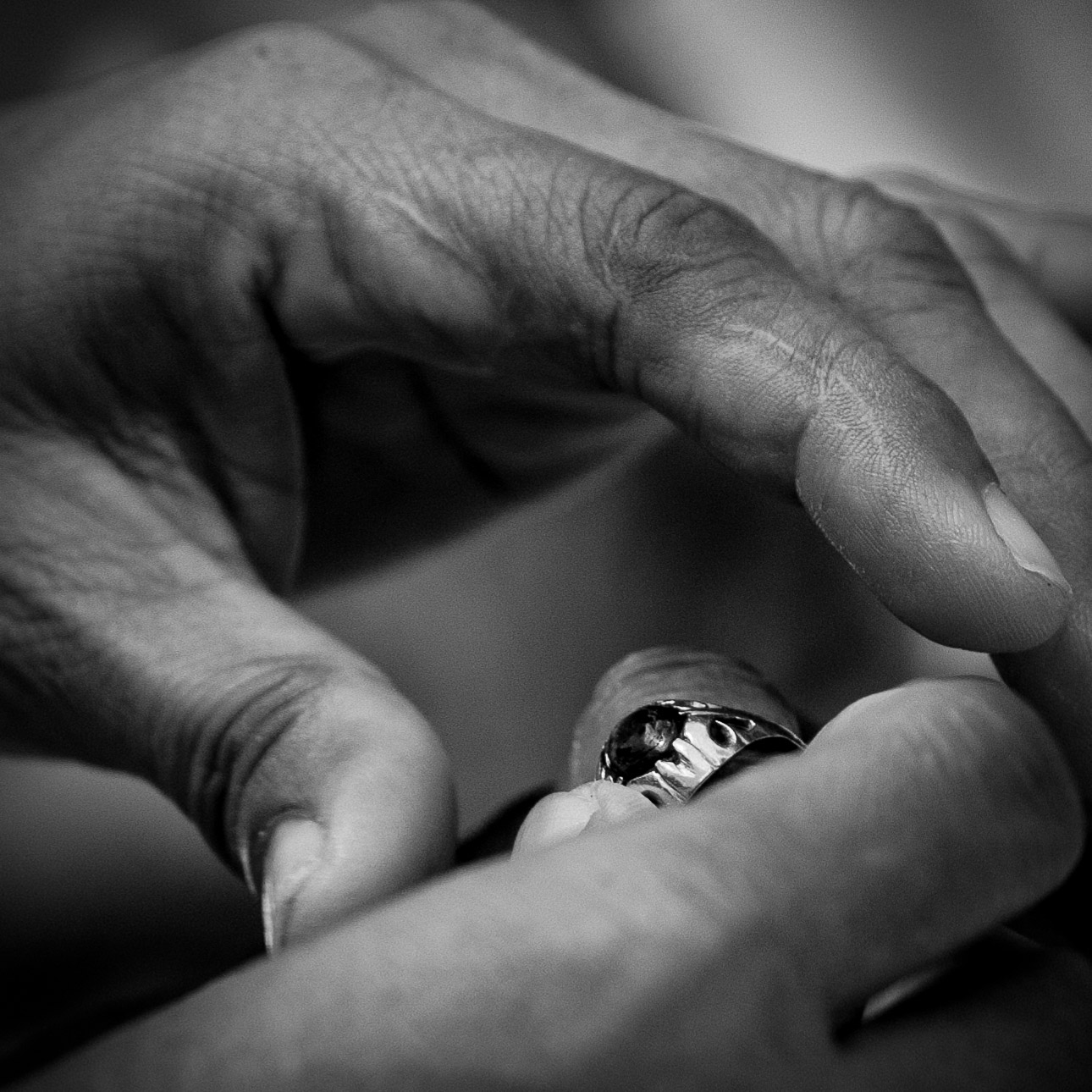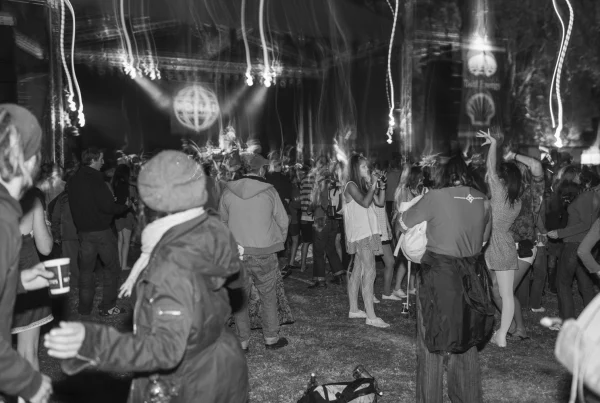Ngaben Cremation in Bali
In this journal entry, I document the Ngaben Cremation of Mr A.A. Mangkling’s in Bali. I am grateful to the family for inviting me to cover the celebration of his life.
In Hindu-Balinese culture, the body is seen as a temporary vessel, impure and insignificant except as a container of the soul. At the time of death, the focus is entirely on the spirit’s passage to heaven, and rather than mourning, the Balinese prefer to hold a grand celebration to hasten their loved one’s soul toward oneness with God.
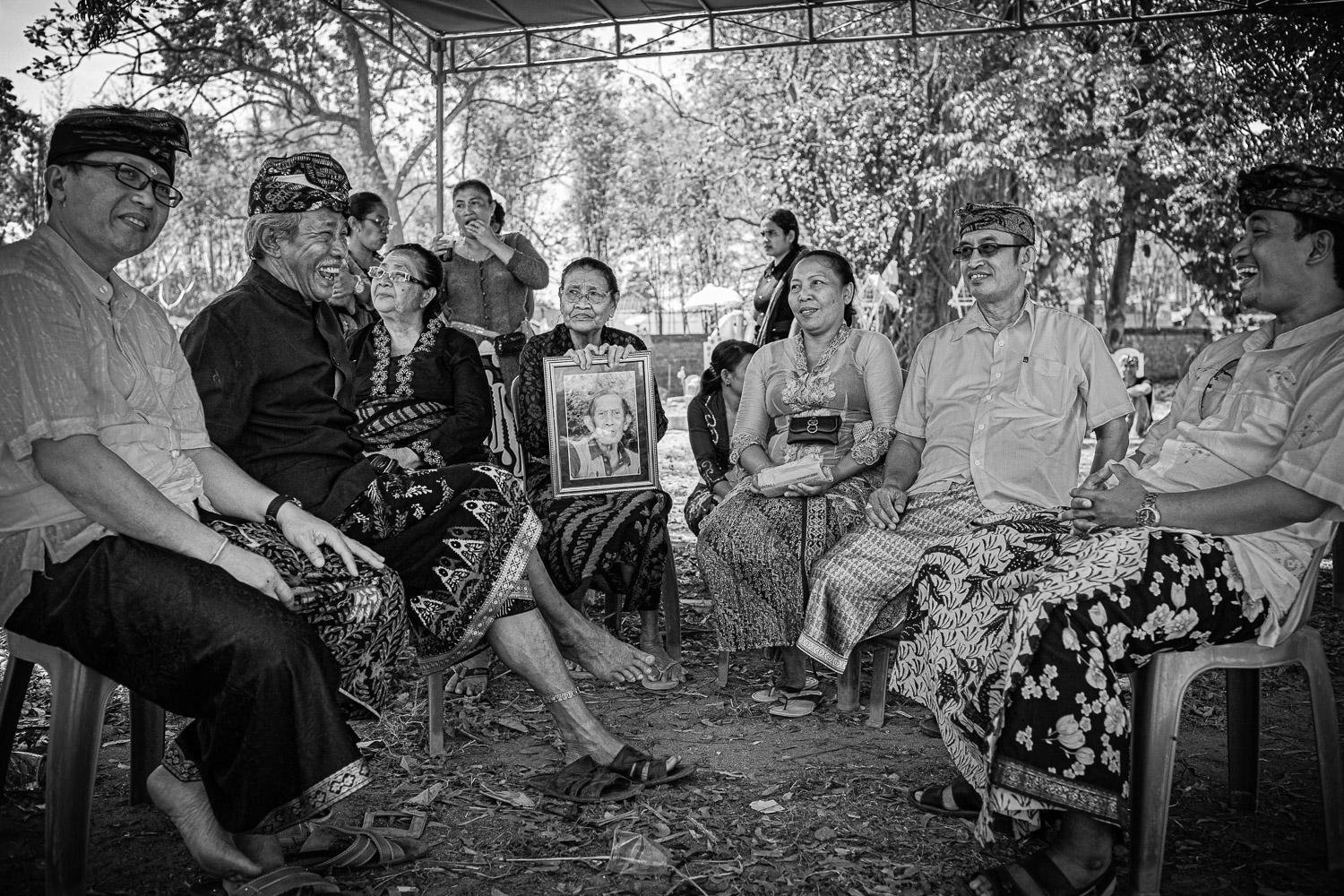
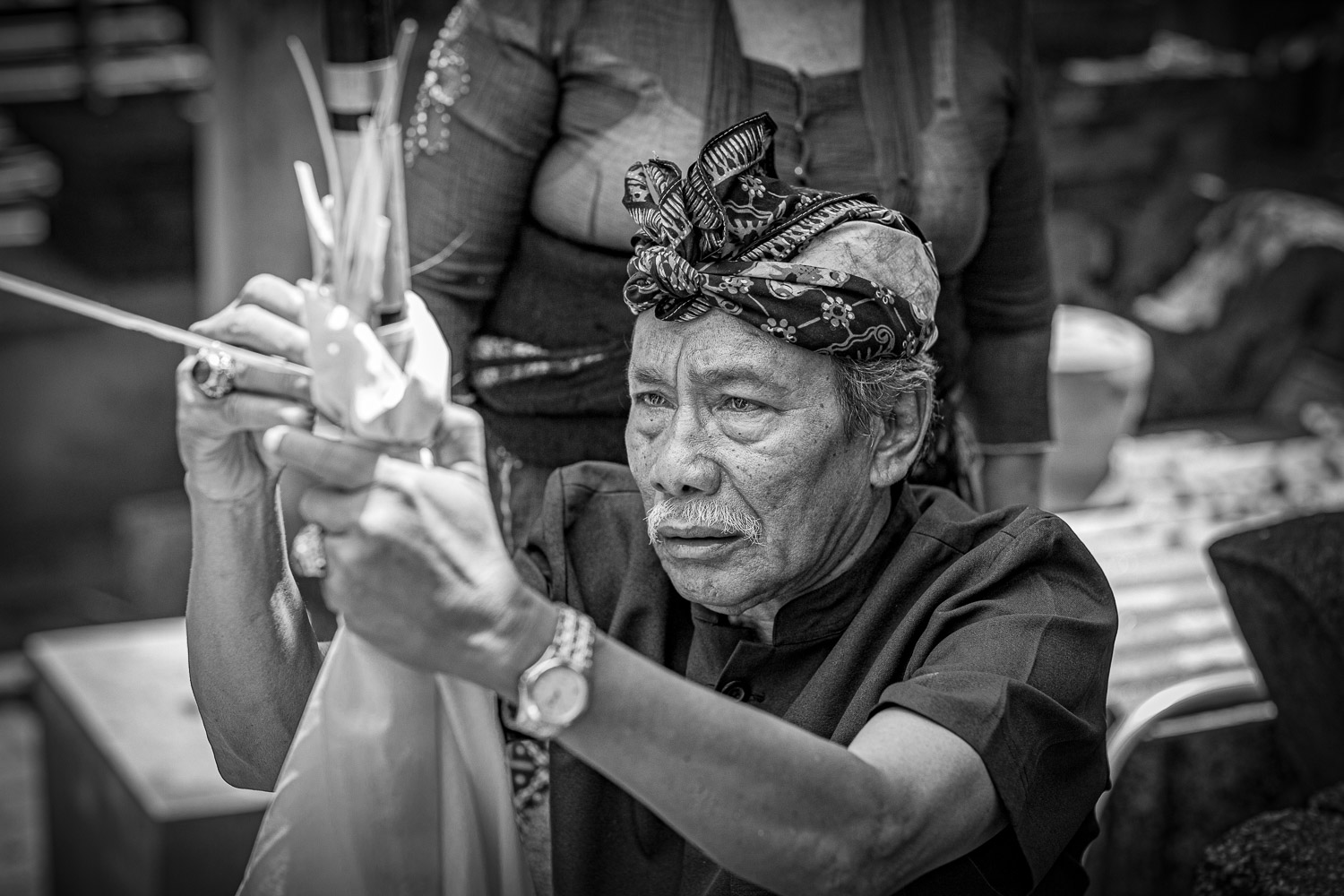

Making the Male Sandalwood Effigy
The head of the family, along with the priestess, creates the sandalwood effigy, a symbolic representation of the departed. The effigy is constructed on a bamboo frame, covered in banyan tree leaves collected during a special ceremony, and decorated with dried flowers and a fan-shaped background.


The village community (banjar) prepares a bamboo stretcher for the ritual of bathing the corpse, known as nyiramin layon.
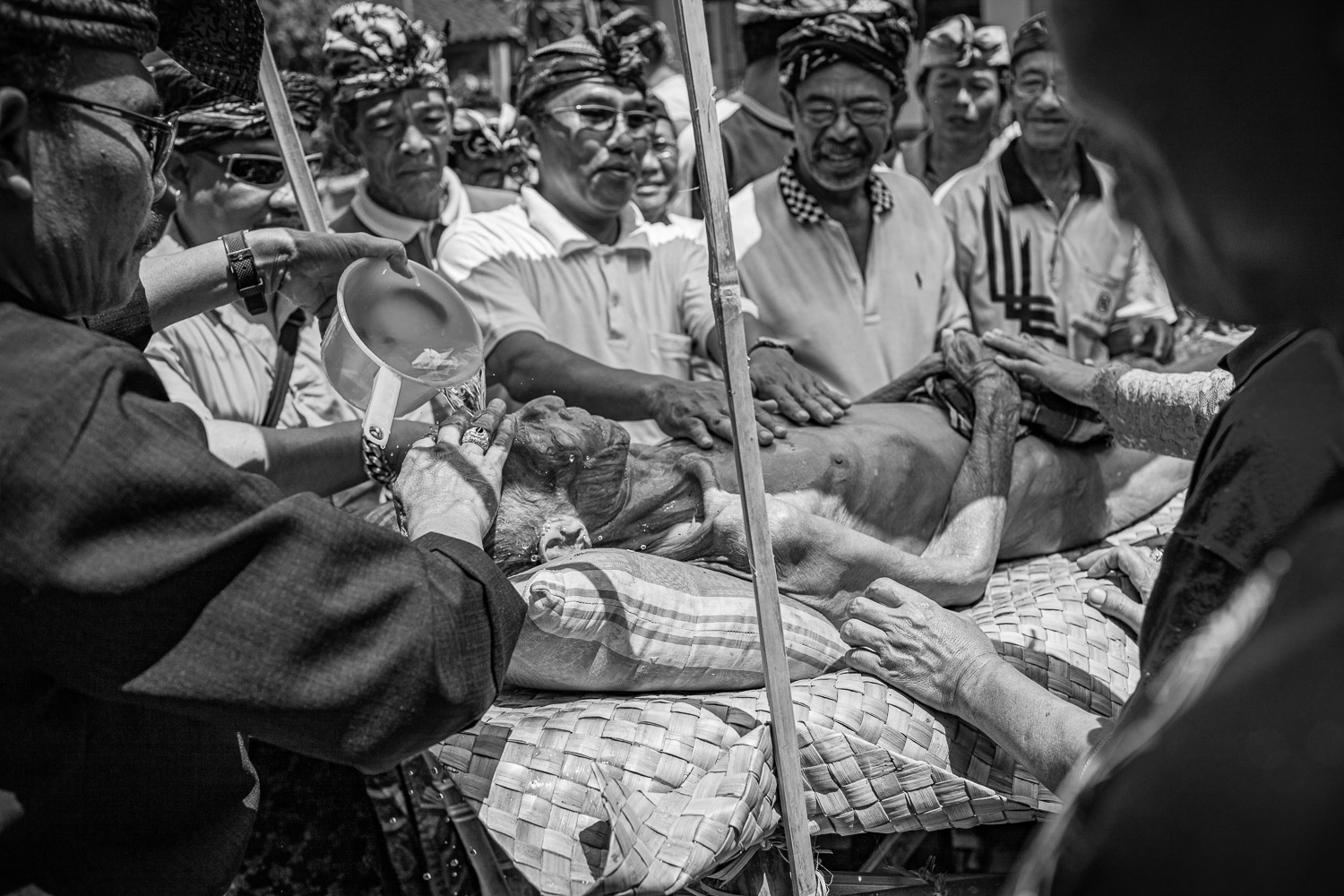
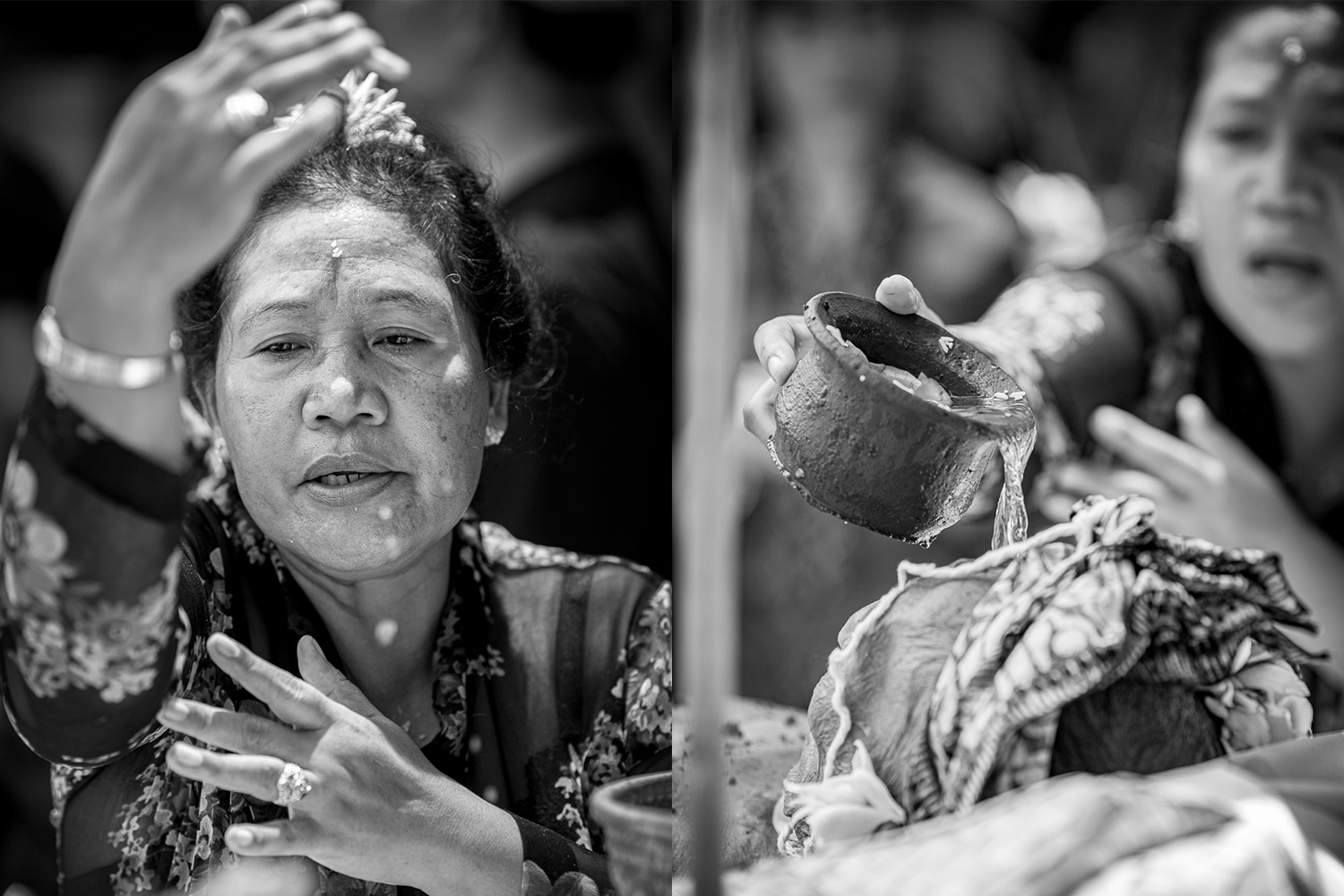
Bathing and Cleansing of the Body
The body is washed with holy water, believed to cleanse spiritual impurities and fend off evil forces.

The Body is Decorated
Various symbolic decorations are applied to the body, such as leaves on the eyebrows to ensure good looks in the afterlife, and gold to signify happiness and positive thinking.
Preparing the Offerings
Women spend weeks preparing to satisfy the evil spirits and implore God to purify the spirit for its return to earth in a purer form.
Procession to the Cremation Grounds
The body is placed on the cremation tower (wadah), and a procession, led by a young man carrying the ceremonial kris, takes the body to the cremation grounds. The banjar men spin the tower to confuse the spirit, preventing it from returning to haunt the family.

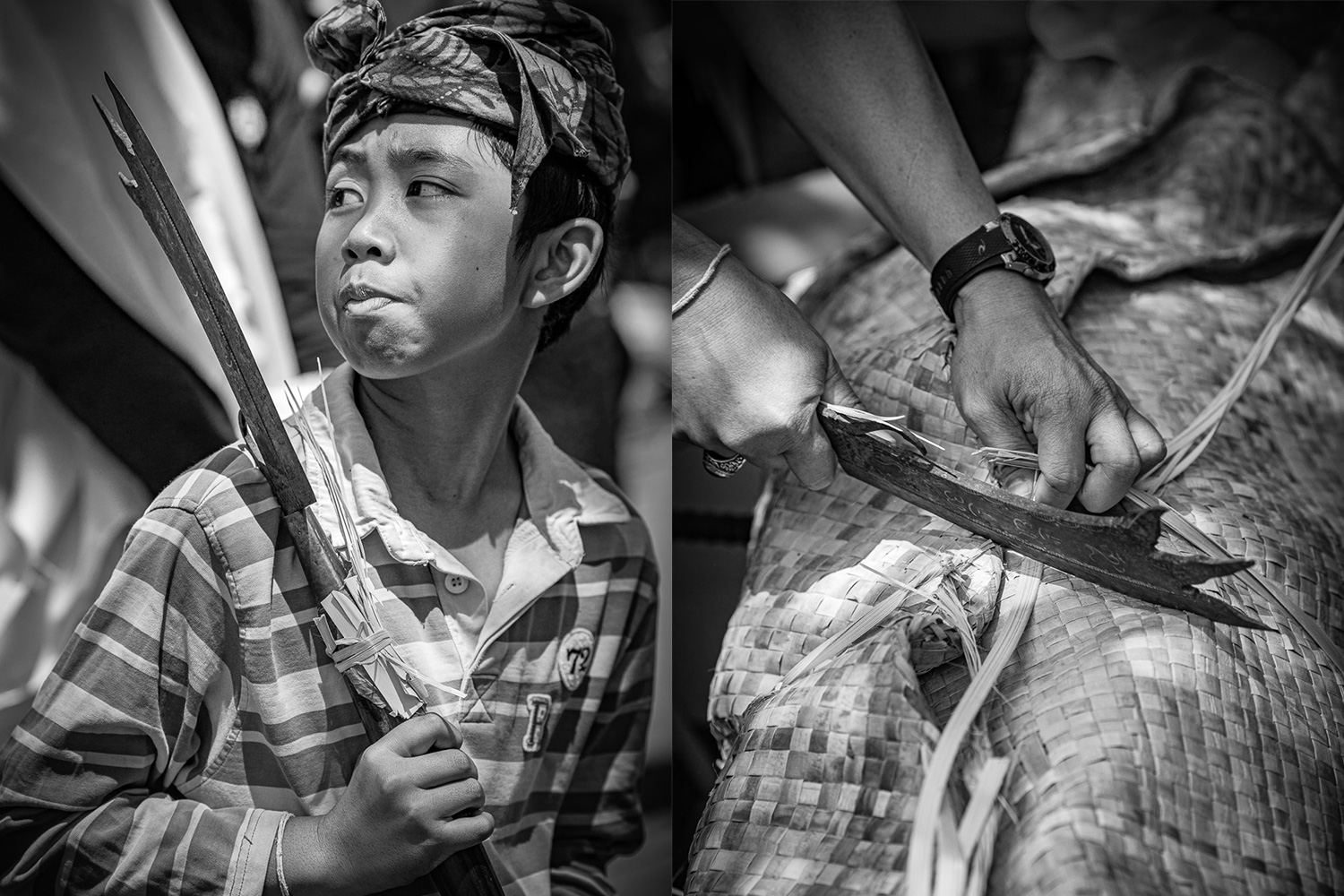
The Long White Cloth and Symbolism
A long white cloth, known the lancingan, is stretched above the heads of the procession. This cloth symbolises attachment and represents the connection between the deceased and their family.
The stuffed bird, amnuk dewata, carried in the procession, signifies the purified soul that the unclean spirit will soon become.
In Hindu-Balinese cosmology, the human body is viewed as a microcosm of the universe. It is composed of five elements: air, earth, fire, water, and space, which temporarily house the atman (immortal soul). The lancingan cloth often features a drawing of this microcosm, representing the universe and the individual’s place in it.

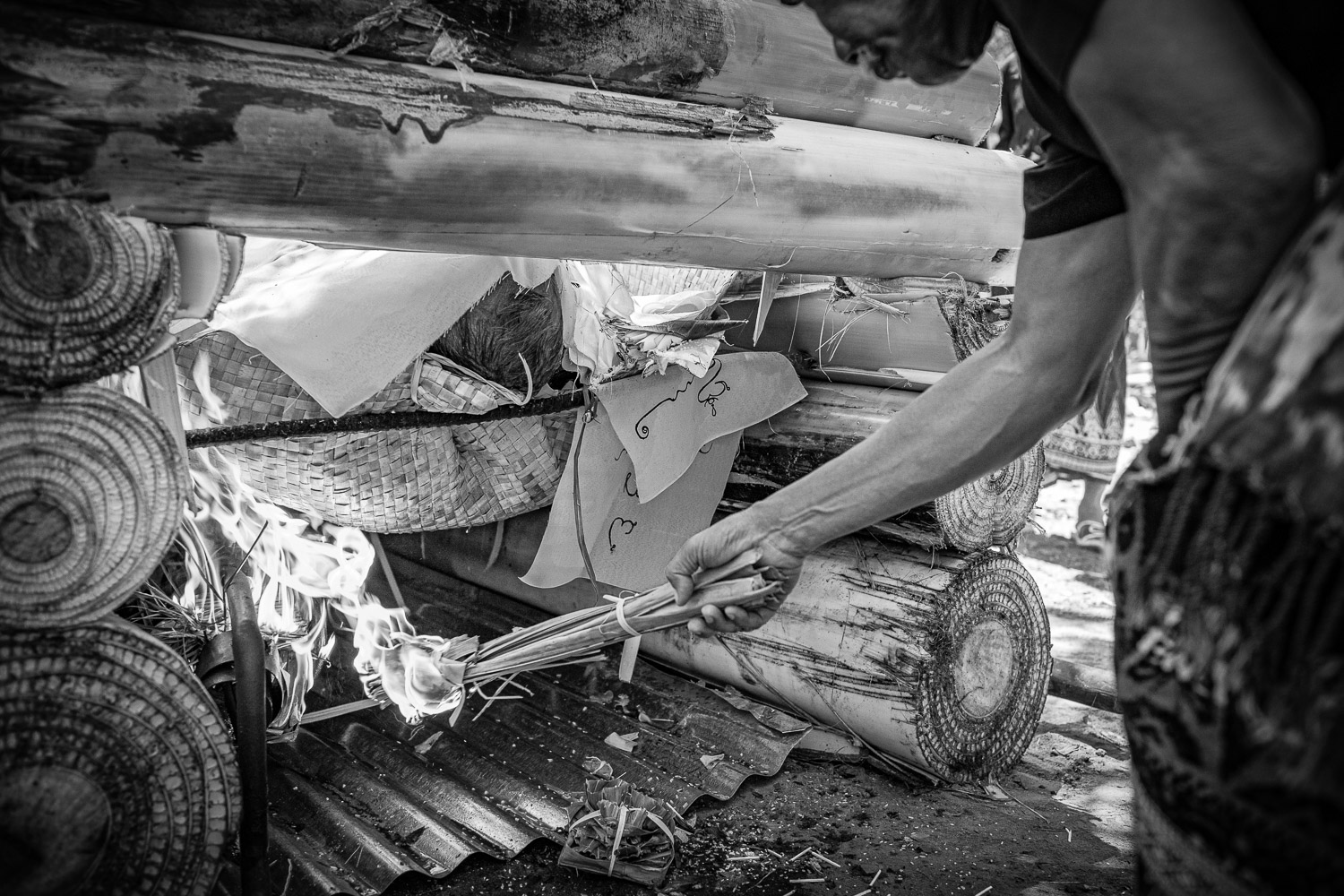
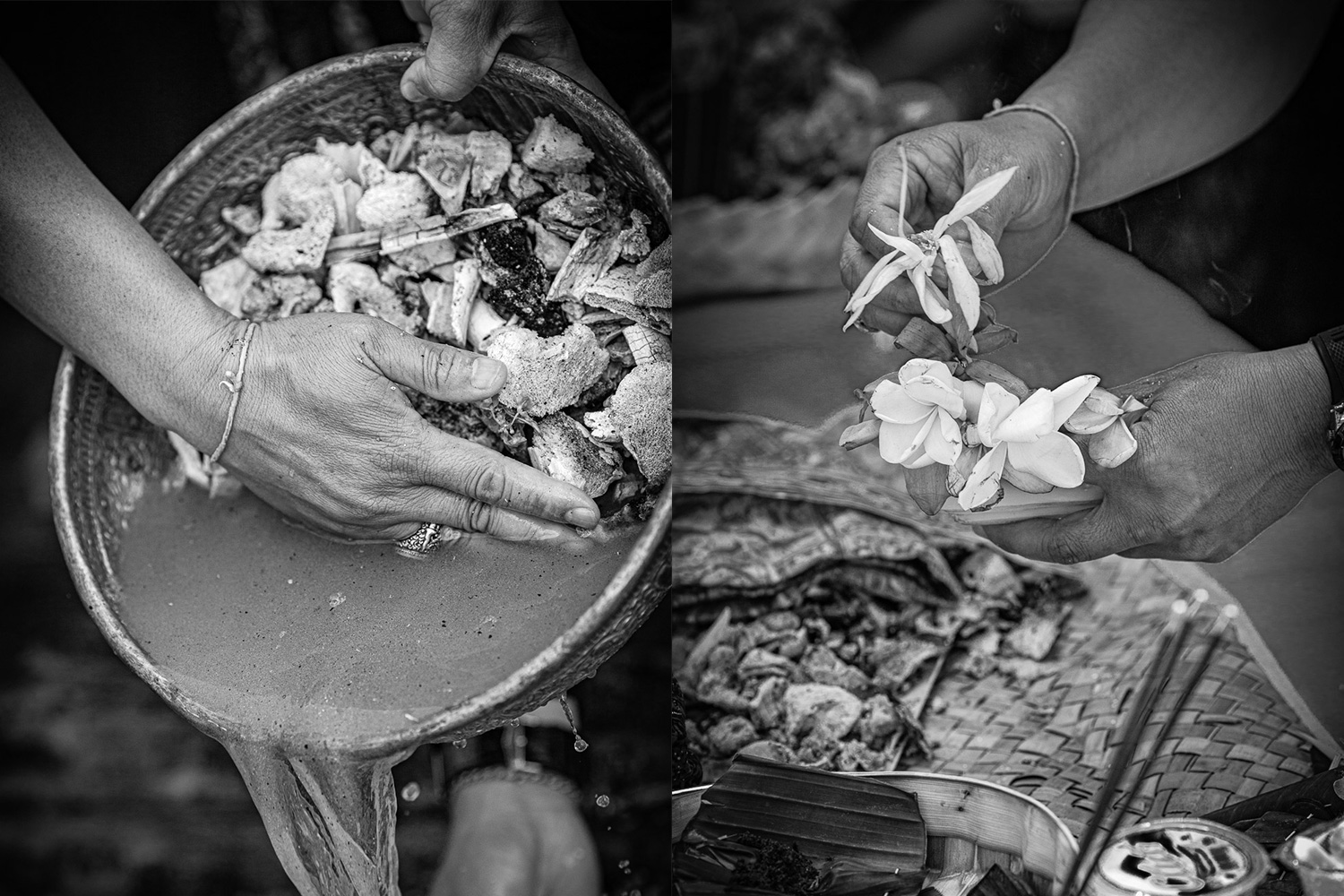
Fire Ritual
The cremation pyre is lit with a blessed torch, marking the beginning of the fire ritual, where the body is offered up as a last sacrifice. Once the fire dies down, family members collect the ashes and bone fragments, which are placed inside a yellow coconut and wrapped for safekeeping.
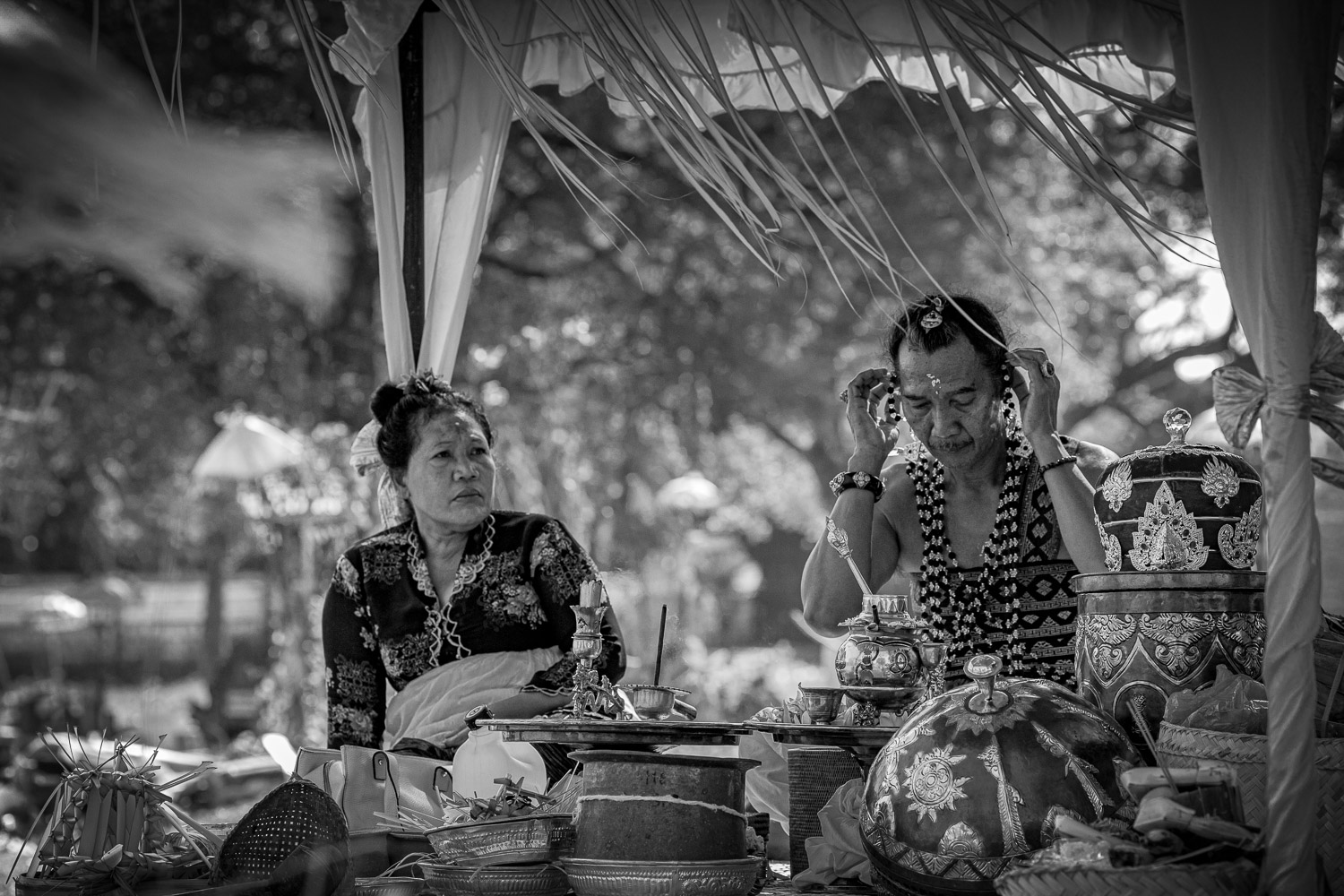

High Priest Ritual Performance
The high priest (pedanda) performs a series of mudras (hand gestures) and chants to aid the soul’s release and journey to afterlife.
Five Elements
In Hindu-Balinese cosmology, the body is a microcosm made up of five elements – air, earth, fire, water, and space. After the cremation, these elements return to the universe, and the spirit is released to the sea, where its impurities are cleansed in preparation for its next incarnation.




Ngaben Cremation in Bali Process:
- The priest selects an auspicious day for the Ngaben and announces it to the village.
- The village community makes the bamboo stretcher for the first ritual.
- Nyiramin layon: the bathing of the corpse with holy water.
- The body is decorated and placed on the cremation tower.
- The body is transported to the cremation grounds by the banjar men.
- The tower is spun to confuse the spirit.
- The cremation pyre is lit with a blessed torch.
- Families collect the remaining ash and bone fragments.
- Bone fragments are placed inside a coconut shell.
- The high priest performs mudras and chants to release the soul.
- The spirit is released to the nearby ocean returning to the elements.
Heartfelt Thanks: I extend my heartfelt thanks to Wayan Budiasa and Yusa Arsana Putra for their assistance and for allowing me to document this sacred ceremony.
This blog post draws upon valuable insights from Fred B Eiseman JR’s book Bali Sekala & Niskala Essays on Religion, Ritual & Art. In particular, the chapter titled Cremation In Bali – Fiery Passage to the Afterlife was an instrumental source that helped me accurately portray and fill in details for this photo essay on Ngaben cremation.
Additionally, this post features family portraits taken at the celebration of Mr Mangklings life, capturing the essence of this significant ritual and the joyous celebration that marks the release of the soul in Balinese Hindu tradition.

